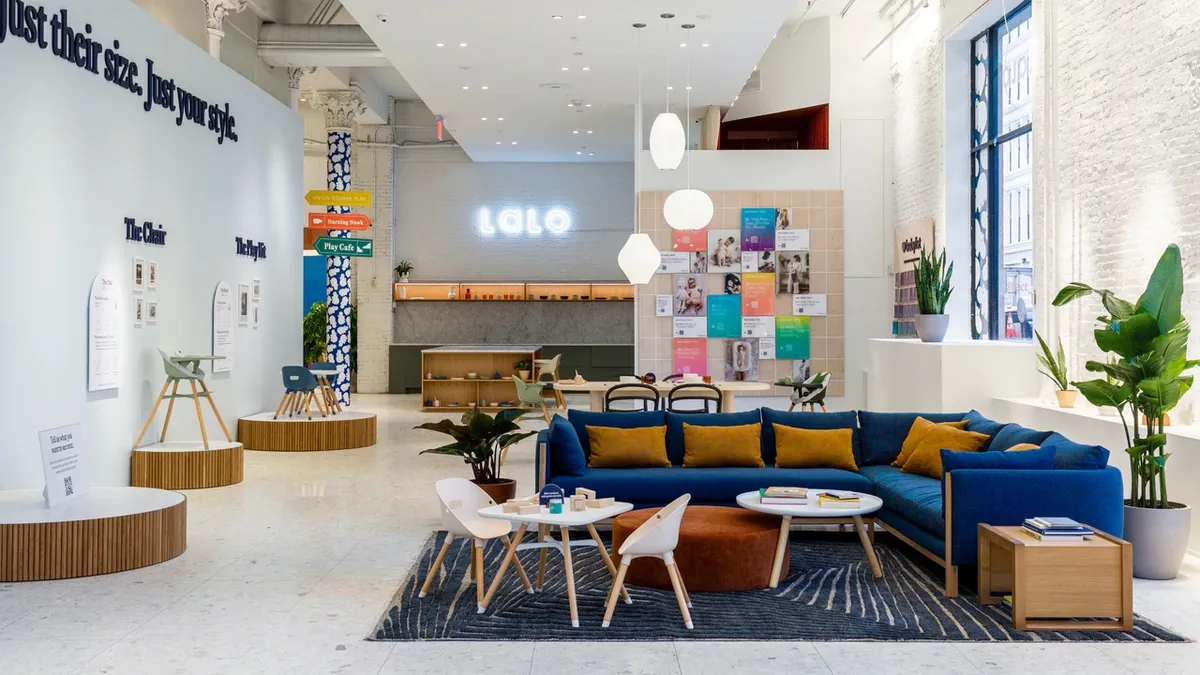Everybody loves to talk about the acceleration of digital, but physical spaces still play a central role in the customer experience — especially when it comes to driving loyalty. A consumer survey from the Lion'esque Group found that while less than a third (35%) of consumers maintain a preference to shop online, most (65%) don't just prefer, but desire, to shop in stores.
The ability to see, touch and engage with products before making a buying decision is a clear benefit for consumers. But as some retail brands try to find new ways to differentiate themselves in an increasingly crowded digital world, they are looking at their physical experiences as their next big opportunity. And the brands that are doing it well are leveraging these three best practices:

Make community connection your foundation
While digital technology allows you to engage shoppers at scale, that personal connection is usually lacking. That's why we're seeing more brands like goodMRKT and Lalo turn their stores into community hubs that are designed to bring brands, associates and customers together.
This is where the art of combining storytelling, visual merchandising and customer experience comes into play. For example, goodMRKT's store creates a highly curated experience built with its assortment of brand partners that were "designed to do good." At the center of the experience is a café environment, where visitors can get a latte, take a seat and dig into some of the brand stories strategically placed around the store. Harry Cunningham, Co-founder and Chief Brand Officer of goodMRKT noted that this space supports organic conversation among consumers and becomes an active area where they host events and founder meet-and-greets.
To create the most relevant and helpful experience in its first store in New York City, baby brand Lalo has created modular spaces where visitors can learn, play and connect with each other. Tapping expertise from hospitality advisers, the team was able to craft the ideal experience, so children have a space to play with items in an organic, collaborative setting, parents and caretakers can sit down with product experts to ask questions and find the ideal products for them, and even partake in fun events and classes like spring craft classes.
In both scenarios, commerce is present but does not overwhelm the experience. The sole goal is to create an enjoyable and immersive space that inspires consumers. And well, if someone ultimately buys something, that's a plus.

Use technology to support a bigger brand purpose
With community connection as the foundation of best-in-class store concepts, technology plays a more distinct and purposeful role: to enhance customer engagement and long-term relationship building. Past references to "the store of the future," always included cutting-edge, customer-facing technology. Touch screens, beacons and even robots were touted to make the shopping experience more fun and, well, "glitzy." But consumers now prefer one device over all others: their personal smartphones.
Your store technology should support consumers' personal devices, not compete with them. Most of all, they should create a clear path for ongoing engagement. That way, when consumers are no longer in the store and engaging with your products and displays, they can continue to interact with your brand and products.
For example, cannabis brands Cookies and Dr. Greenthumb's use in-store technology to immerse store visitors into their unique brand stories and create powerful, one-to-one service experiences. When customers leave the store, social media and digital marketing help continue the conversation and drive them back to locations again and again.
"Our customer service model is similar to an Apple store or other upscale retail brand experience," said Jon-Luca Del Fante, VP of Store Design and Construction for Cookies Real Estate. "Our 'budtenders' meet and walk with customers populating their order on a tablet before heading to the cash desk for check out."

Create opportunities for speed and convenience
For some retailers, though, a high service "Apple model" is not necessary. It's not viable for the products they sell or it's not relevant to their customer needs. However, technology can still support the shopping journey via fast and seamless checkout.
Companies like Circle K and 7-Eleven are integrating mobile payment into their app experiences to support contactless checkout, while Whole Foods and Hudson News are using Amazon's Just-Walk-Out technology. This is certainly not a one-size-fits-all solution and investment may not make sense for certain retailers. The goal for retailers that do invest in this technology is finding the right way to balance speed, convenience and thoughtful browsing and service experiences.
The most challenging yet exciting thing about this new era of store and experience design is that there is no cookie-cutter solution. All brands have a unique story to tell and distinct value to provide their customers. However, there is one universal truth that should drive all decision-making: Even as consumers continue their return to stores, the digital behaviors they've picked up during the pandemic will stick for the long term. Brands and retailers that win in the coming years will embrace digital innovation and find more thoughtful and authentic ways to blend digital and physical engagement.










